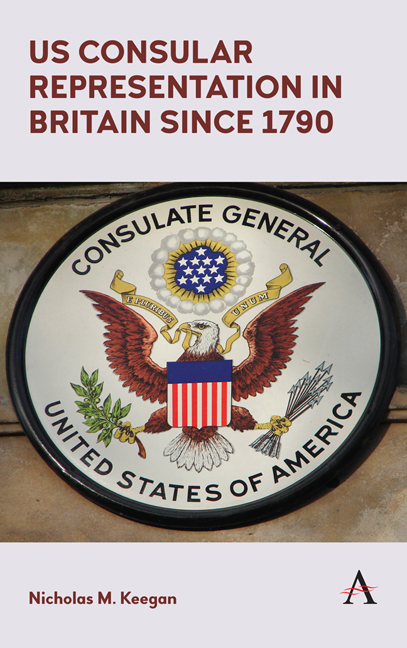Book contents
- Frontmatter
- Dedication
- Contents
- List of Illustrations
- Foreword
- Preface
- Acknowledgements
- Introduction
- PART 1
- Chapter One Early Colonial History and American Independence
- Chapter Two Creation and Growth of the State Department
- Chapter Three Establishment and Development of the Consular Service
- PART 2
- PART 3
- Appendix: Locations and Categories of Consular Offices
- Notes
- Sources
- Bibliography
- Index
Chapter Two - Creation and Growth of the State Department
from PART 1
Published online by Cambridge University Press: 21 June 2018
- Frontmatter
- Dedication
- Contents
- List of Illustrations
- Foreword
- Preface
- Acknowledgements
- Introduction
- PART 1
- Chapter One Early Colonial History and American Independence
- Chapter Two Creation and Growth of the State Department
- Chapter Three Establishment and Development of the Consular Service
- PART 2
- PART 3
- Appendix: Locations and Categories of Consular Offices
- Notes
- Sources
- Bibliography
- Index
Summary
Given that America had been a group of British colonies until the end of the third quarter of the eighteenth century, it obviously neither sent nor received consuls. The overseas interests of its sailors and merchants was the responsibility of British consuls. All that changed when the colonies achieved independence and nationhood. The United States now had to be responsible for its own diplomatic and commercial relations with other countries. Therefore, an executive department for administering this had to be created. The colonists were well aware of this and had taken the first steps towards doing so shortly before the Declaration of Independence.
In November 1775, the Second Continental Congress appointed a secret committee, chaired initially by Benjamin Franklin, to correspond with friends and sympathizers in Britain, Ireland and other parts of the world. This was the Committee of Secret Correspondence, which was renamed the Committee for Foreign Affairs in April 1777, with Thomas Paine as its first secretary. However, this committee system of government, and particularly of running foreign affairs, was frequently criticized, and in January 1779 Congress instructed the committee to obtain information about the ways in which other countries administered not only their foreign policy but also other topics. As a result, the committee had a further name change on 10 January 1781 to the Department of Foreign Affairs, headed by a Secretary for Foreign Affairs. The first holder of the office, Robert R. Livingston, was not offered the post until August and mulled it over before accepting it on 20 October. He held the appointment until 4 June 1783 before resigning. He was succeeded almost a year later by John Jay, who served from 7 May 1784 until 4 March 1789. On 27 July 1789 Congress formally established the department, but less than two months later, on 15 September, gave it a number of additional domestic responsibilities, such as custody of the Great Seal of the United States. As a consequence of these new functions it was renamed the Department of State, and was headed by a secretary of state. The first holder of this office was Thomas Jefferson, who was appointed on 26 September 1789 but did not take up his duties until almost six months later, on 22 March 1790.
- Type
- Chapter
- Information
- US Consular Representation in Britain since 1790 , pp. 13 - 22Publisher: Anthem PressPrint publication year: 2018



